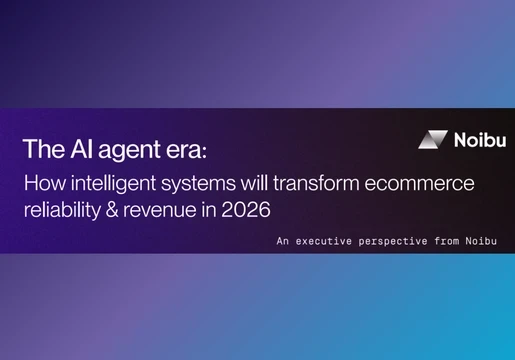Companies today rely on a range of different systems to complete everyday tasks. But as business functions expand, companies can quickly become overwhelmed by the range of different tools at their disposal.
When these solutions aren’t aligned, they can’t share data and work together as they should. This can lead to disconnected data, lost productivity, and even security issues.
System integration is crucial for preventing this from happening, and many organizations today rely on it to stay on top of the expanding toolset they use for day-to-day business.
This article tells you everything you need to know about system integration, including what it is, its components and types, and examples of the process in action.

What is System Integration?
The definition of system integration is the process of connecting multiple different systems into a single larger system that functions as one. This allows businesses to share information between different sub-systems autonomously by translating data from different sources in the technology stack.
The goal of system integration is to break down communication barriers among disparate systems by ensuring that data flows seamlessly between different platforms.

In the tech world, this typically involves linking software applications, databases, and other IT systems so they can communicate and share data seamlessly.
This allows for a more streamlined workflow and eliminates the need for manual data entry between different programs.
How Does System Integration Work?
System integration is all about connecting different computer systems and software applications to function as a single, unified system. There are various ways to achieve this, but the core dea is to enable data to flow freely between different systems.
This might involve customer information from an e-commerce platform being transferred to a customer relationship management (CRM) system. This way, the CRM system has the latest data to provide better customer service
By integrating systems, you eliminate data silos, which are isolated pockets of information within an organization. This improves efficiency and avoids situations where different departments have conflicting information.
Components of System Integration
There are different approaches to system integration, but a common thread is ensuring all the connected systems work together smoothly to achieve the desired outcome. This process involves various components working together seamlessly to achieve a unified view of an organisation's different systems.
The key components of system integration include:
1. Data Integration
The foundation of system integration lies in ensuring seamless data exchange between different systems through data integration. This involves ensuring that data is accurate, reliable, and can be shared and utilized effectively across different systems.
Data integration focuses on combining data from various sources into a single, unified view to create a consistent and complete dataset for further analysis, reporting, or data warehousing. This data can come from different types of systems like databases, CRM, ERP, and even social media platforms.

Data integration is often a key step in system integration because once systems are connected, their data needs to be combined and standardized for effective use. This allows you to break down data silos and gain valuable insights from a holistic view of your information.
2. Application Integration
Connecting different applications to communicate and operate in harmony is essential for system integration. Application integration involves establishing a unified interface that allows applications to exchange data and interact without disruptions. These applications may be from different vendors, reside on-premise or in the cloud, and have entirely different functionalities.
The key goal of application integration is to break down information silos between applications. This enables smoother workflows, improves data consistency, and allows users to leverage functionalities from various applications without switching between them.
3. Process Integration
Process integration is the glue that binds the functionalities of different systems within a larger integrated system. This involves simplifying workflows, eliminating redundancies, and automating tasks to enhance productivity.
Process integration ensures that individual tasks within different systems are connected and flow smoothly, eliminating the need for manual data entry or switching between applications and creating a more streamlined workflow. This makes it easy for data generated in one system to be automatically transferred and used by another, reducing errors and improving efficiency.
4. Infrastructure Integration
Infrastructure integration focuses on managing and connecting the underlying hardware and network components that support all the software applications within the system. It ensures these resources are managed effectively to support the integrated system's demands, ensuring the infrastructure can handle the processing power and data flow required by the integrated system.
It also establishes secure and reliable network connections, such as Local Area Networks (LANs) or Wide Area Networks (WANs), depending on the system's needs. This ensures smooth communication, efficient resource utilization, and overall system stability, which are all crucial for a successful system integration project.
Types of System Integration

The types of system integration can vary depending on who you ask. Some experts categorise system integration by the methodologies used to connect systems, such as APIs, webhooks, Integration Services Components and Orchestration.
On a basic level, however, there are four main types of system integration:
1. Enterprise Application Integration (EAI)
Enterprise Application Integration (EAI) is a specific type of system integration that focuses on connecting various software applications within a single organization. It specifically targets enterprise applications used by different departments, like CRM, ERP (Enterprise Resource Planning), and inventory management systems.
EAI aims to establish a standard way for these applications to communicate and share data, regardless of their underlying technology. This makes integration smoother and reduces the need for extensive modifications to each individual application.
2. Point-to-Point Integration
Point-to-point integration is a type of system integration where individual systems are directly connected to share data or functionalities they need to work together. Unlike other methods that rely on a central platform, point-to-point integration establishes a dedicated link between the two systems involved, enabling faster data exchange and potentially less complexity in the initial setup. Data exchange can be facilitated through custom code written specifically for the integration or by leveraging APIs provided by the systems themselves, which offer a standardized way for applications to communicate and share data.
Point-to-point integration is well-suited for scenarios where you only need to connect a few specific systems. It's a relatively simple and straightforward approach to achieve data exchange between a limited number of applications.
3. Vertical Integration
Vertical integration in system integration focuses on connecting various systems within a specific department or business function within an organization. It aims to create a streamlined workflow and improve efficiency by unifying data and functionalities within a particular area.
Vertical integration concentrates on systems used within a specific function like HR, finance, manufacturing, or supply chain. For example, integrating HR management systems, payroll processing systems, and benefits administration systems within the HR department.
By connecting these departmental systems, vertical integration allows for smoother data flow and eliminates the need for manual data entry between them. This reduces errors, saves time, and facilitates better decision-making within the department.
4. Horizontal Integration
Horizontal integration brings together functionalities and data from different departments within an organization, breaking down departmental silos and fostering a more unified view of operations. Unlike vertical integration which connects systems within a single department, it bridges the gap between different departments.
By sharing data and functionalities across departments, horizontal integration allows for better collaboration and communication. Departments can gain insights into each other's operations, leading to more informed decision-making and providing a more holistic view of the customer journey. For instance, integrating a customer service platform with a sales CRM allows customer service representatives to see a customer's past interactions and purchase history, enabling them to provide more personalized and efficient service.
Benefits of System Integration
System integration is a complex process, but it can offer a wide range of benefits for businesses of all sizes. Some of the major benefits of system integration include:
- Increased Efficiency and Productivity. By connecting disparate systems, data silos are eliminated, and manual data entry is minimized. This streamlines workflows, reduces errors, and frees up employees to focus on more strategic tasks.
- Improved Data Visibility and Accuracy. System integration ensures consistent data flows across the organization. This provides a more comprehensive and accurate view of operations, leading to better decision-making based on real-time data.
- Enhanced Collaboration. Integration fosters communication and collaboration between departments. With shared data and functionalities, departments can work together more effectively to achieve common goals.
- Better Customer Experience. A horizontally integrated system allows for a 360-degree view of the customer journey. Businesses can personalize interactions, anticipate customer needs, and provide a more consistent and positive customer experience.
- Reduced Costs. System integration eliminates redundancy in data storage and reduces the need for manual processes. It can also lead to increased productivity and reduced operational costs.
- Improved Competitive Advantage. By streamlining operations, gaining better customer insights, and making data-driven decisions, businesses can gain a competitive edge in the market.
- Scalability and Flexibility. A well-designed integrated system can be easily scaled to accommodate future growth and changing business needs.
- Simplified IT Management. System integration can simplify IT management by consolidating tools and reducing the complexity of managing multiple isolated systems.
Examples of Systems Integration
Companies today have a range of methods available they can access to connect systems and tools. Some of the most common connectors include things like middleware for connecting disconnected data, application programming interfaces (APIs), and webhooks or HTTP call-backs. They can also use electronic data exchange systems for the same purposes.
Systems integration strategies can also involve various models. For example, a point-to-point model involves extracting data from one system and submitting it to another environment automatically. Meanwhile, a hub-and-spoke model uses a central hub to sort through the data collected from each environment and deliver it in a useful format for business leaders.

The unified environment would pull data from each tool leveraged by the company, without requiring them to access the software solutions separately, allowing for better end-to-end visibility, and improved productivity for the team.
System integration touches mutliple aspects of any organization, so there are many real-world examples across different industries. Here are a few to illustrate the concept:
1. Inventory Management & Point-of-Sale (POS) Integration
Imagine a retail store connecting its inventory management system with its POS system. This allows real-time updates on stock levels whenever a sale is made. The system can automatically trigger purchase orders when inventory falls below a certain threshold, preventing stockouts and lost sales.
2. CAD & Manufacturing Execution Systems (MES) Integration
In a manufacturing setting, integrating Computer-Aided Design (CAD) software with the MES can streamline production processes. The MES receives product design data directly from CAD, eliminating errors and ensuring production follows the exact specifications.
3. Banking Systems & Accounting Software Integration
Banks can integrate their core banking systems with accounting software used by their corporate clients. This allows for automatic data exchange between the two systems, such as account balances and transaction details. This streamlines reconciliation processes and reduces manual data entry errors.
4. Electronic Health Records (EHR) & Appointment Scheduling Systems Integration
Hospitals can integrate their EHR systems with appointment scheduling systems. This allows patients to view their medical history, book appointments, and manage their healthcare information online. Additionally, doctors can access a patient's complete medical record during appointments, leading to better-informed treatment decisions.
5. CRM & Marketing Automation Integration
E-commerce businesses can integrate their CRM systems with marketing automation platforms. This allows them to target marketing campaigns based on customer data stored in the CRM. They can send personalized emails, recommend relevant products, and improve the overall customer experience.
Want to know who are the best system integration companies for you business? Check out our Top 10 System Integrator companies for 2024 to learn more!







Comments ( 0 )